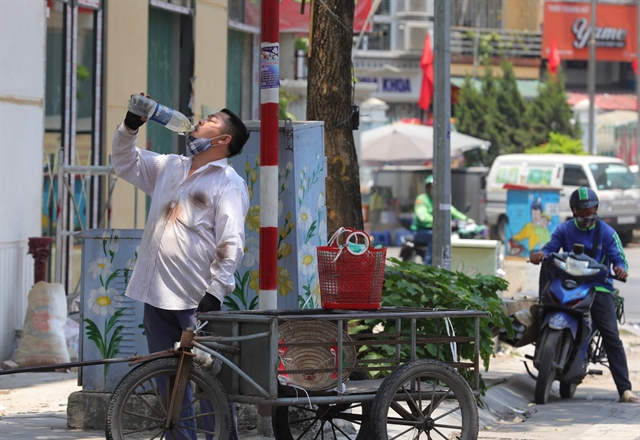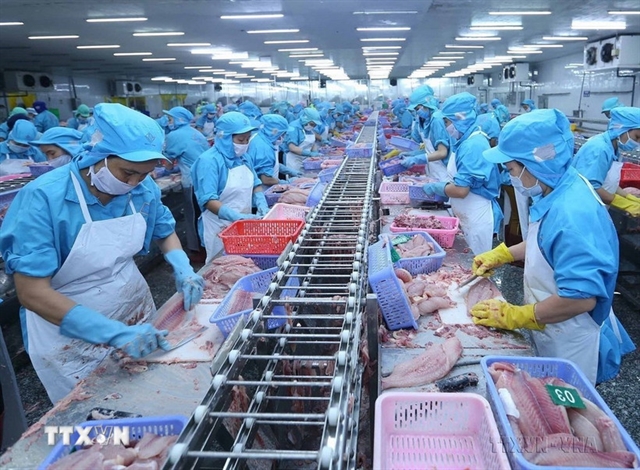 Society
Society

 |
| Motorists in Hà Nội wore protective clothing while outside in the scorching heat last weekend. — VNA/VNS Tuấn Đức |
HÀ NỘI — Việt Nam is forecast to experience extreme weather conditions and severe fluctuations in temperatures this summer.
Speaking to Tuổi Trẻ (Youth) online newspaper, Dr Phan Văn Tân, former head of the Department of Meteorology of the Hà Nội University of Sciences, said that El Nino will be the dominant weather phenomenon this year.
“El Nino will occur around June and July, and last until at least the end of this year.
“According to our research, usually during years with El Nino, storms will occur further east, so the number of storms in the East Sea is expected to decrease. This means less rainfall in the mainland, particularly in the central region,” said Tân.
He added that the most recent heat wave was unusual, with a record temperature of 44.1 degrees Celsius last Saturday. It surpassed the highest temperature recorded in the same month of 2019, which was 43.4 degrees.
This does not mean that this year’s weather is the hottest ever seen, but that extreme weather phenomena, such as heatwaves, could be on the rise with more intensity than the average of previous years, Tân said.
“Overall, the average temperature will be higher. As to when the temperature will reach the peak and at what level, it depends on many factors,” he added.
Tân said that in addition to climate change, human impacts “definitely” contribute to the increasing heatwaves, alongside socio-economic development factors.
In Hà Nội, as skyscrapers and concrete surface increase, so does the urban heat island effect, he said.
Therefore, people in major cities such as Hà Nội and HCM City are advised to refrain from going outside during the hottest hours.
 |
| A man in Hà Nội drinks water in the shade to cool down in the hot weather last Saturday. — VNA/VNS Photo Hoàng Hiếu |
Tân said: “This year, there will be less overall rainfall due to El Nino, but there might be extremely heavy rain.
“The spike in rainfall in a short period of time can cause flooding and landslides in mountainous areas,” Tân stressed.
Lê Thị Xuân Lan, former deputy head of the forecasting department of the southern region’s Hydro-meteorological Station, said: “I have been working as a meteorologist for years, and almost every year there is a time when the weather is like this. But this year, it is very unusual.”
She added that there is currently a conflict between air masses, which could lead to extreme weather phenomena.
The hot weather will ease in the immediate future, but it is only temporary. The rain will lower the temperature, but then heatwaves will return.
Lan said: “Starting this week, winds from the southwest will increase, bringing more rainfall.
“Rain at the beginning of the season is always accompanied by hail, lightning storms and tornadoes, causing damage to houses and trees.”
Regarding the current hot weather, Lan said that the temperature of 39.4 degrees Celsius in southern Biên Hòa City, Đồng Nai Province, is high but not a record.
Xuân Lộc District in Đồng Nai Province, Đồng Phú District and Phước Long Town in Bình Phước Province also saw higher temperatures than HCM City.
The central region is expected to see record-breaking heatwaves this year due to climate change and an intensifying hot depression.
Lan said: “Hot weather is partially due to climate change, but humans are also a factor in this temperature increase.
“In urban areas, there are millions of air conditioners, which help cool the indoor air but the heat they release causes a significant rise in the atmosphere’s temperature.
“This is why people can still feel the unbearable heat even at night.” — VNS




